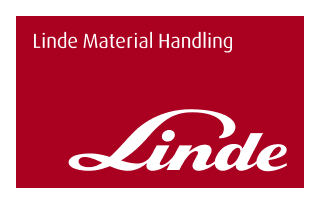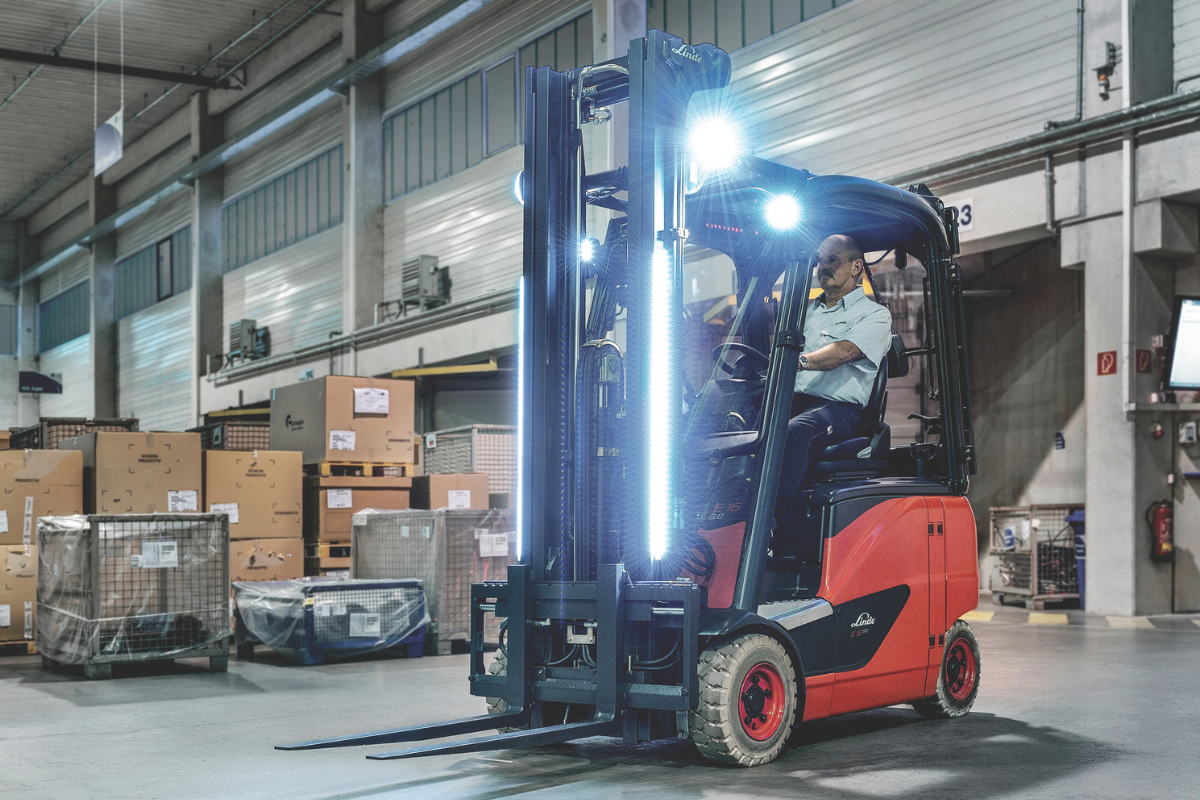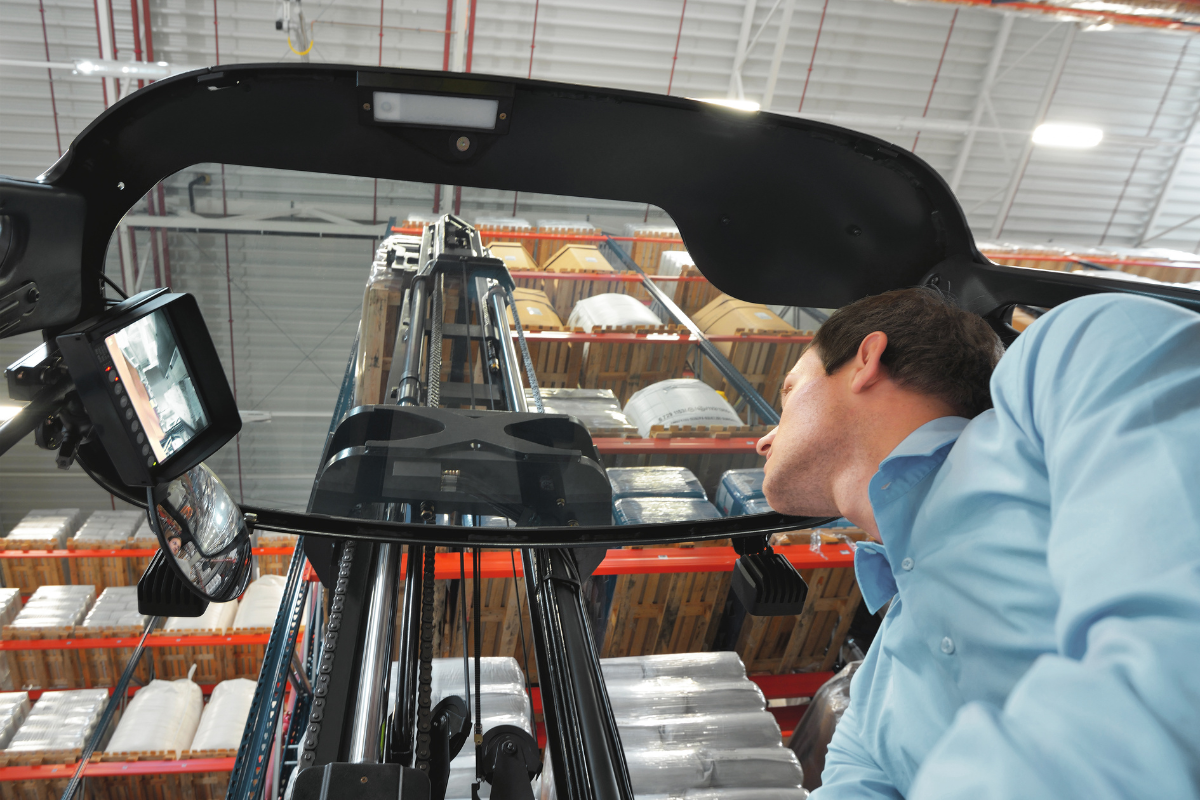- Blog
- General


Safety should be paramount for any fleet manager, but for many, simply adhering to mandated safety features isn’t sufficient. Whether it’s through their dedication to best practice or their dedication to duty of care, many forklift buyers opt for additional safety features for added peace of mind.
Linde provides an extensive range of advanced safety options beyond its standard equipment. These features can be customised for new forklift orders or, in most cases, retrofitted to enhance the safety of existing fleets.
“Seeing and being seen is essential not only to safety but also efficiency when working with industrial trucks,” according to Allan Spackman, Technical Solutions Manager at Linde Material Handling.
He points out that many forklift lighting systems provide limited illumination and often leave the edges dark or cast reflections on the mast or load that can dazzle the driver.
In contrast, Linde VertiLight and Linde LED Stripes both provide optimum illumination of the working area and enable safe, precise and efficient work even in poorly lit environments.
Linde’s often-imitated BlueSpot and Truckspot are simple yet highly effective safety solutions that project a blue warning spot or symbol onto the ground, alerting pedestrians and other forklift drivers to approaching trucks.

Interaction between forklifts and pedestrians is inevitable – and unfortunately, also inherently risky. To mitigate these risks, Linde developed the Linde Safety Guard, a system which deploys transmitters on industrial trucks, walls, racking, and even carried by personnel to ensure rapid detection, early warning, and avoidance of hazardous situations.
Spackman points to other solutions like Linde Motion Detection and Linde Surround View as innovative operator warning aids. The first detects movement in the field of view and warns the operator, while the second enhances visibility by adding a 360-degree camera system.

As warehouse aisles become narrower and racking heights increase, ensuring safe and efficient load handling has never been more critical. Linde addresses these challenges, with innovative solutions like Dynamic Mast Control, which reduces active mast oscillation at extended lift heights for reach trucks, and Dynamic Reach Control, which minimises active reach carriage oscillation on VNA turret trucks.
Linde also offers a range of advanced systems designed to prevent accidents and damage to goods and racking include:
Beyond Linde’s standard and optional safety features, forklift owners can enhance safety with an expanding range of solutions. These include camera-based AI human detection systems, line-of-sight pedestrian detection utilising reflective workwear, impact detection systems, speed-limiting zones, warning light and alarm options, and signage and physical barrier systems.

Given the wide range of options available, Linde’s Spackman advises forklift owners to carefully evaluate where, how and why their equipment is used to ensure maximum value and safety.
“Simply ticking an option box on your new forklift without consulting your Materials Handling Equipment (MHE) experts is not the best way to ensure everyone goes home safely,” he says. Spackman warns that some features can be ineffective - or even detrimental to safety - if applied incorrectly.
“Your MHE provider should assess your site, application, equipment, and the types of loads handled to recommend the most suitable safety options for your operation,” he adds.
It’s important to note that no safety assistance system can replace the responsibility of operators and related personnel. Even the most advanced system is designed only to enhance awareness and mitigate potential incidents.
“There is no substitute for responsible behaviour, sound judgment, thorough training and experience when operating high-risk equipment,” Spackman concludes.
Keep up to date with the latest in material handling safety and innovation by visiting our Content Hub and subscribing to our quarterly newsletter. And for the latest news and updates on all things Linde, follow us on LinkedIn.
VISIT CONTENT HUB